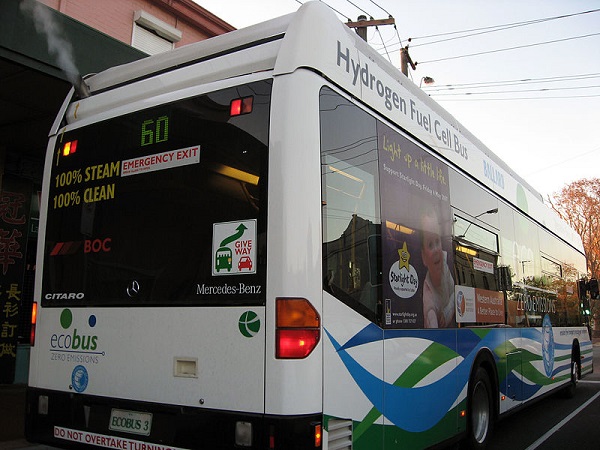Suddenly, hydrogen is happening.
Just a week after Canadian researchers said they had developed catalysts that would vastly increase the viability of hydrogen production by electrolysis – perhaps unlocking new renewable energy storage possibilities – a Virginia Tech researcher team says a new enzyme combination will allow hydrogen to be produced from plant matter in a way that “releases almost no greenhouse gasses, and does not require costly or heavy metals.”

Whether either or both of these developments pans out remains to be seen, of course, but together they do inject some excitement into a sector that, in the U.S., had taken a bit of a backseat in the Obama administration’s green drive.
The man behind the reported game changer out of Virginia Tech, biological systems engineering professor Y.H. Percival Zhang, was none too shy about the impact. “Our new process could help end our dependence on fossil fuels,” Zhang said in a statement.
Like everyone else pursuing the elusive hydrogen economy, Zhang has been looking for a way to move beyond the standard way to produce hydrogen – steam reforming, aka steam methane reforming – which is only about 80 percent efficient and not entirely clean.
The Canadians are tackling the hydrogen-production issue by finding a better way of using electricity to split oxygen and hydrogen; at Virginia Tech, the route is to treat hydrogen as a biofuel, mining hydrogen from a plant sugar called xylose. As described by VTU:
To liberate the hydrogen, Virginia Tech scientists separated a number of enzymes from their native microorganisms to create a customized enzyme cocktail that does not occur in nature. The enzymes, when combined with xylose and a polyphosphate, liberate the unprecedentedly high volume of hydrogen from xylose, resulting in the production of about three times as much hydrogen as other hydrogen-producing microorganisms.
The energy stored in xylose splits water molecules, yielding high-purity hydrogen that can be directly utilized by proton-exchange membrane fuel cells. Even more appealing, this reaction occurs at low temperatures, generating hydrogen energy that is greater than the chemical energy stored in xylose and the polyphosphate. This results in an energy efficiency of more than 100 percent — a net energy gain.
“We think this discovery is a game-changer in the world of alternative energy,” Zhang said.
He’s got others in his camp, too. From the Virginia Tech release:
Jonathan R. Mielenz, group leader of the bioscience and technology biosciences division at the Oak Ridge National Laboratory, who is familiar with Zhang’s work but not affiliated with this project, said this discovery has the potential to have a major impact on alternative energy production.
“The key to this exciting development is that Zhang is using the second most prevalent sugar in plants to produce this hydrogen,” he said. “This amounts to a significant additional benefit to hydrogen production and it reduces the overall cost of producing hydrogen from biomass.”